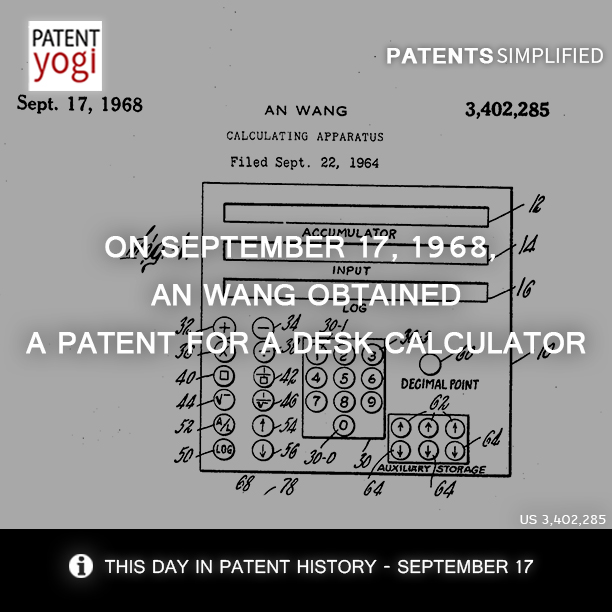On September 17, 1968, An Wang obtained a patent for a desk calculator. The patent help Wang dominate desk calculator market for a decade.
This invention relates to calculating apparatus and more particularly to calculating apparatus that include the capability of manipulating data on a logarithmic basis.
Before this patent commercial and scientific procedures demand that increasingly large masses of data be processed, and such processing frequently involved or was an integral part of mathematical analyses. Such mathematical analyses encompass, in addition to addition and subtraction, multiplication, division and even more complex manipulations, e.g. those employing exponential values. While digital computers of conventional logic organization could perform such manipulations, the techniques that are employed frequently involve complex, circuitous and time-consuming operations to obtain the desired results or solutions to specific problems.
The logarithm is a well known tool for simplifying such operations. However, the techniques for utilizing logarithms in calculations have, in general, employed either mechanical devices (analog computers) in the nature of slide rules or similar but more sophisticated devices, or stored tables of logarithmic values (e.g. a preset relay matrix) in a digital computer type of device. The analog devices, in addition to the speed and accuracy limitations inherent in such devices, have characteristics of inflexibility relative to available processing techniques, while the stored table technique requires tremendous storage capacity which result in large and expensive computer equipments.
Patent Information
Patent Number: US3402285
Patent Title: Calculating apparatus
Publication number: US3402285 A
Publication type: Grant
Publication date: 17 Sep 1968
Filing date: 22 Sep 1964
Priority date: 22 Sep 1964
Also published as: DE1499281B1
Inventors: Wang An
Original Assignee: Wang Laboratories
ABSTRACT: A calculator includes an input register and a log register, each having adder circuitry coupled to it. Ten manual control buttons are provided for entering numerical values 0 through 9 into the input register. The calculator also includes a store of logarithmic values of the following constants: 10, 2, 0.9, 1.01, 0.999 and 1.0001 and a sequencer. Operation of the sequencer is initiated by a single manual log control button. The sequencer then automatically controls, in a series of steps, the selection of constants and the operation of the input register and log register adders to generate in the log register a logarithmic value of the quantity stored in the input register.


